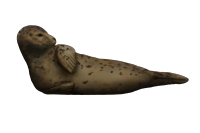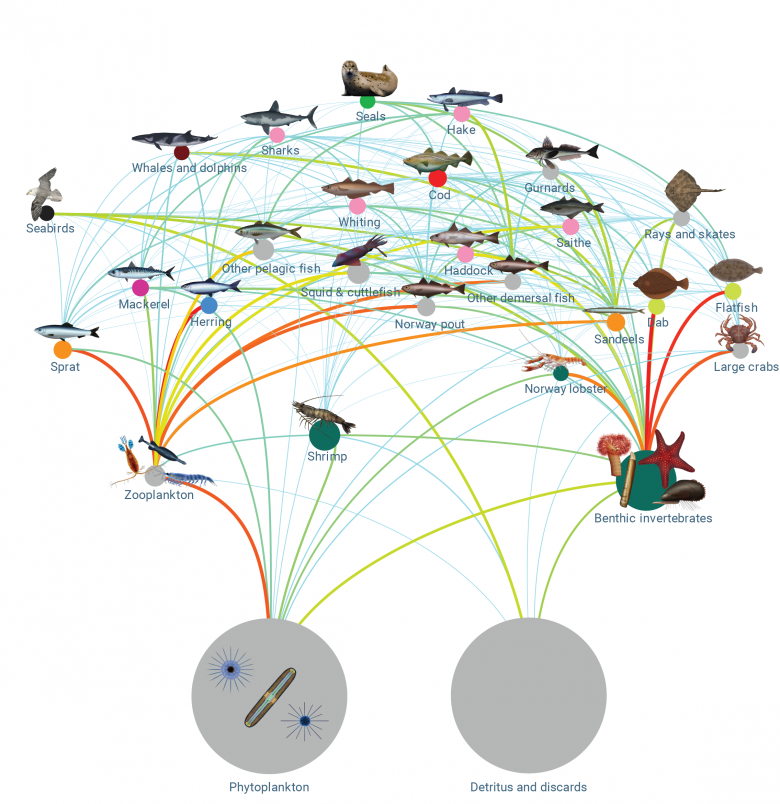No edit summary |
No edit summary |
||
| Line 24: | Line 24: | ||
}} | }} | ||
===Description:=== | ===Description:=== | ||
| Line 40: | Line 38: | ||
Seal are at the top of the food chain, eating mostly sandeel, sprat and flatfish. | Seal are at the top of the food chain, eating mostly sandeel, sprat and flatfish. | ||
</div> | </div> | ||
<div id='tab2' class='tab-pane fade'> | <div id='tab2' class='tab-pane fade'> | ||
[[File:Food web2.png|780px]] | |||
==== In different languages ==== | ==== In different languages ==== | ||
Revision as of 21:55, 13 April 2018
 | |
| Layer Info | |
|---|---|
| Category | Birds and mammals |
| Editable | No |
| Data source | Ecosystem simulation |
| Values | |
| Extremely Low | |
| Low | |
| Medium | |
| High | |
| Extra High | |
| Extreme | |
Description:
Habitat: Bathydemersal
Main role: Predator
Trophic level: 5
Diet: Grey seals feed mostly on sandeels, but the diet of harbour seal is more variable with relatively high proportions of gadoids, flatfish and coastal demersal fish such as gobies, bullrout, and dragonets.
Threats: Seals are sensitive to pollution, coastal disturbances, and entanglement in marine debris.
MSP Challenge 2050:
Seal are at the top of the food chain, eating mostly sandeel, sprat and flatfish.
In different languages
- SN: Halichoerus grypus ; phoca vitulina
- EN: Grey seal and harbour seal
- NL: Grijze zeehond ; gewone zeehond
- GE: Kegelrobbe; Seehund
- DK: Gråsæl; spættet sæl
- FR: Phoque gris; phoque commun
- NO: Havert; steinkobbe
- SE: Gråsäl; knubbsäl
These marine mammals breed in colonies on and around coasts. The grey seals are less shy and much more curious than harbour seals. In the North Sea, most of the grey seals live around the Scottish islands, along the British coast and in Cornwall. The harbour seal have a particular preference for tidal regions and river mouths, where deserted sandbanks or stones are exposed during low tide.
ON THIS TAB VISUAL CONTENT IS PLACED

 Co-funded by the European Union.
Co-funded by the European Union.